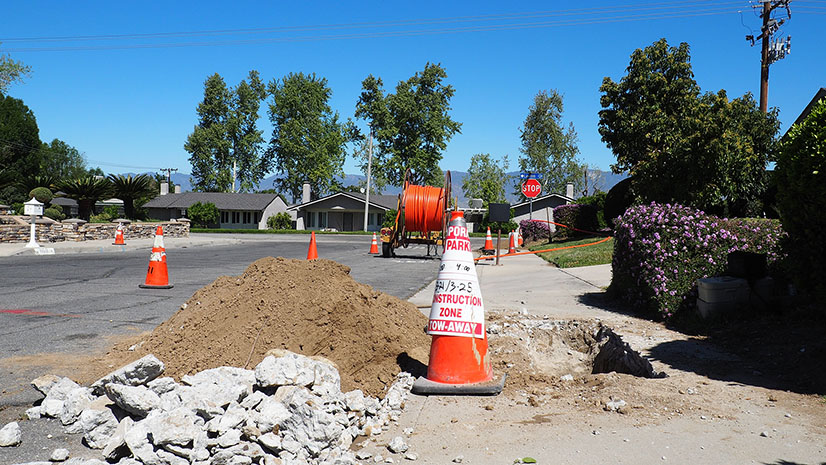Life Experiences and GIS Advocacy Awake Opportunities to Work with Nonprofits
Charitable giving and volunteering to nonprofits always seemed personal to me. My support of nonprofits probably started in grade school where the nuns either made us give our change to poor children in far away lands, pick up trash on the side of the road, or volunteer at school. In time, I learned to give to causes like the United Way through payroll deductions and donating blood to LifeStream. Frankly, these were “easy” ways to volunteer or donate.
As I grew older, my causes became more personal. Annual efforts to support arterial tortuosity syndrome (ATS), a friend’s son came down with this rare disease; dropping off a bag of food and supplies for a homeless person; or paying for a disabled youth’s summer camp that uses horses as therapy; or whatever struck me a need that tugged at my heart.
My career in government and geographic information system (GIS) led me to shift my thinking as to other ways I could support nonprofits. One of the first ways I applied GIS was helping organizations fill out their Community Development Block Grant (CBDG) requests. The CDBG program led to me adopting the public library and providing access to maps and data via a rudimentary app. Nonprofits were able to find their census tracks and provide data and maps on low and moderate income. It was at that point that I began to see the opportunity to use GIS to help nonprofits apply for grants and communicate their missions.
This spring I had an eye-opening experience as I watched Esri coworkers Pat Dolan and Amanda Stanko work with several small ALS nonprofits to raise awareness of those affected by the disease. Pat Dolan is one of those individuals living with ALS. Pat and Amanda used GIS to rally various ALS-oriented nonprofits to secure the first ever funding from Congress. The effort was inspirational and a model for the union of more GIS professionals and nonprofits.
Adopt a Nonprofit: It Will Do Your Heart Some Good
The world needs more people like Pat and Amanda. Take this as an open call to all GIS professionals and all professionals that use GIS to adopt-a-nonprofit in your community. Pick a cause that tugs at your heartstrings and tell them about the power of GIS. More specifically, pick a smaller nonprofit in your state, region, county, or city. Did you know that small nonprofits (those with 25 employees or less) make up the bulk of the 1.6 million organizations that help augment or supplement government services.
Introduce the nonprofit to the advantages of spatial thinking and GIS. You can assure the leaders and volunteers that thousands of nonprofits are already using GIS to advance their efforts. The use of spatial technology ranges from local chapters of the American Red Cross responding to disasters; the NAACP advocating for fair redistricting; efforts such as the San Jose Mothers’ Milk Bank connecting mothers to breast milk resources during the recent formula shortage; and the Surfrider Foundation who looks to protect our beaches, and Donate Life California who is helping people waiting for a life-saving organ transplant.
Esri Small Nonprofit Grant Initiative Offers GIS Ambassadors an Opportunity to Make a Difference
Esri is going to make adopting a nonprofit easier. We have launched the Esri Small Nonprofit Organization Grant Initiative which will waive the first year’s fees and provide data, software, and resources. The goal is to introduce GIS as a tool to help nonprofits become more data-driven, identify opportunities to connect with donors and volunteers, and to communicate their mission and success more effectively. The program goal is to assist small nonprofits who would benefit from the value GIS brings to their business functions. A secondary goal is to introduce this community to the larger academic, commercial, and government communities.
As a GIS Ambassador, we ask that you simply make your favorite organizations aware of the effort. Ongoing support can come from joint county and nonprofit projects, extending local data, providing cross-training on the software, and keeping an open line of communication. Every GIS Ambassador may have a different passion. We hope you will consider all the nonprofits in your community, whether the organization is focused on feeding the homeless, providing humanitarian relief to humans in crisis, providing a voice for civil liberties, protecting animals, encouraging conservation and strong environmental practices, helping the aging populations, or providing comfort to our veterans.
As a GIS advocate, know that these organizations are driven by their desire to make a difference. Having a great mission alone is not enough. But having the tools to collect and analyze data, storytelling tools to communicate a mission, and the ability to target donors and volunteers, will help build strong business operations. As part of your effort to Adopt-A- Nonprofit, help nonprofit leaders understand the business value GIS can bring. Point them to the Esri nonprofit community resources which should help them realize the geographic approach to identifying communities in need, allocating resources, communicating purpose, improving advocacy, and increasing overall effectiveness and efficiency.
Let them know what you know: organizations that thrive are those that plan, measure, and manage their programs and operations through one common language—location.
Who is Eligible?
The Esri Small Nonprofit Organization Grant Initiative assists small nonprofit organizations that are new to using geographic information system (GIS) technology. Esri is investing $1 million in this grant initiative, which will provide software and training to 150 nonprofit organizations that meet the requirements of an eligible 501(c)(3) public charity. Each applicant must be a small nonprofit organization with 25 or less employees that are not currently using Esri’s ArcGIS software. We have designed a special grant package that includes software, data, and training. This bundle gives up to five people in an organization access to various GIS tools and capabilities.
Point Your Colleagues to the Grant Application Now
The grant program opened today on August 17, 2022, National Nonprofit Day.
The application to apply is a simple two-step process.
- Step 1 – Applicants fill out the short online grant request and justification form.
- Step 2 – Applicants confirm their 501(c)(3) status via the Esri Nonprofit Organization Program form.
The second step helps nonprofits become a sustainable member of the Esri nonprofit community.
After both steps are completed, Esri will confirm your 501 (c)(3) status and then review your grant application. Grant recipients will be announced in two groups on November 17, 2022, and February 28, 2023.
If you’re a community leader, please forward the Esri Small Nonprofit Organization Grant Initiative to your community’s nonprofit leaders at esri.com/nonprofitgrant.



